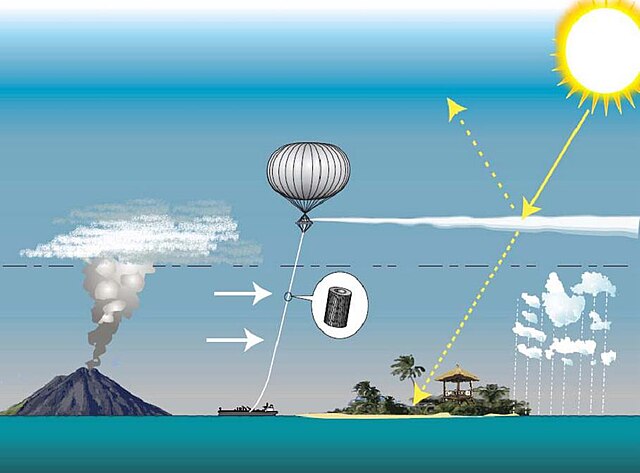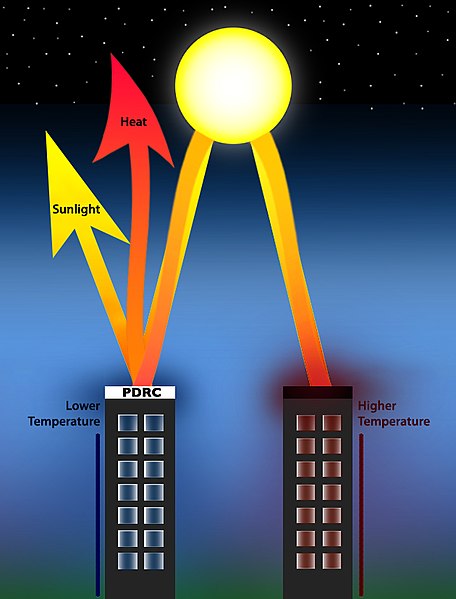Solar radiation modification
Solar radiation modification (SRM), or solar geoengineering, is a type of climate engineering in which sunlight would be reflected back to outer space to offset human-caused climate change. There are multiple potential approaches, with stratospheric aerosol injection being the most-studied, followed by marine cloud brightening. SRM could be a temporary measure to limit climate-change impacts while greenhouse gas emissions are reduced and carbon dioxide is removed but would not be a substitute for reducing emissions.
SRM can be deployed on different scales. This graph shows the baseline radiative forcing under three different Representative Concentration Pathway scenarios, and how it would be affected by the deployment of SAI, starting from 2034, to either halve the speed of warming by 2100, to halt the warming, or to reverse it entirely.
Potential complementary responses to climate change: greenhouse gas emissions abatement, carbon dioxide removal, SRM, and adaptation. Originally called the "napkin diagram" and drawn by John Shepherd.
Modeling evidence of the effect of greenhouse gases and SRM on average annual temperature (left column) and precipitation (right column). The first row (a) is moderately high continued greenhouse gas emissions (RCP4.5) at the end of the century. The second row (b) is the same emissions scenario and time, with SRM to reduce global warming to 1.5 °C. The third row (c) is the same emissions scenario but in the near future, when global warming would be 1.5 °C, with no SRM. The similarity between the second and third rows suggests that SRM could reduce climate change reasonably well.
Stratospheric Particle Injection for Climate Engineering
Climate engineering is an umbrella term for both carbon dioxide removal and solar radiation modification, when applied at a planetary scale. However, these two processes have very different characteristics. For this reason, the Intergovernmental Panel on Climate Change no longer uses this overarching term. Carbon dioxide removal approaches are part of climate change mitigation. Solar radiation modification is reflecting some sunlight back to space. All forms of climate engineering cannot be standalone solutions to climate change, but need to be coupled with other forms of climate change mitigation. Some publications place passive radiative cooling into the climate engineering category. This technology increases the Earth's thermal emittance. The media tends to use climate engineering also for other technologies such as glacier stabilization, ocean liming, and iron fertilization of oceans. The latter would modify carbon sequestration processes that take place in oceans.

Planting trees is a nature-based way to temporarily remove carbon dioxide from the atmosphere.
Proposed solar geoengineering using a tethered balloon to inject sulfate aerosols into the stratosphere
Passive daytime radiative cooling (PDRC) can lower temperatures with zero energy consumption or pollution by radiating heat into outer space. Widespread application has been proposed as a solution to global warming.







